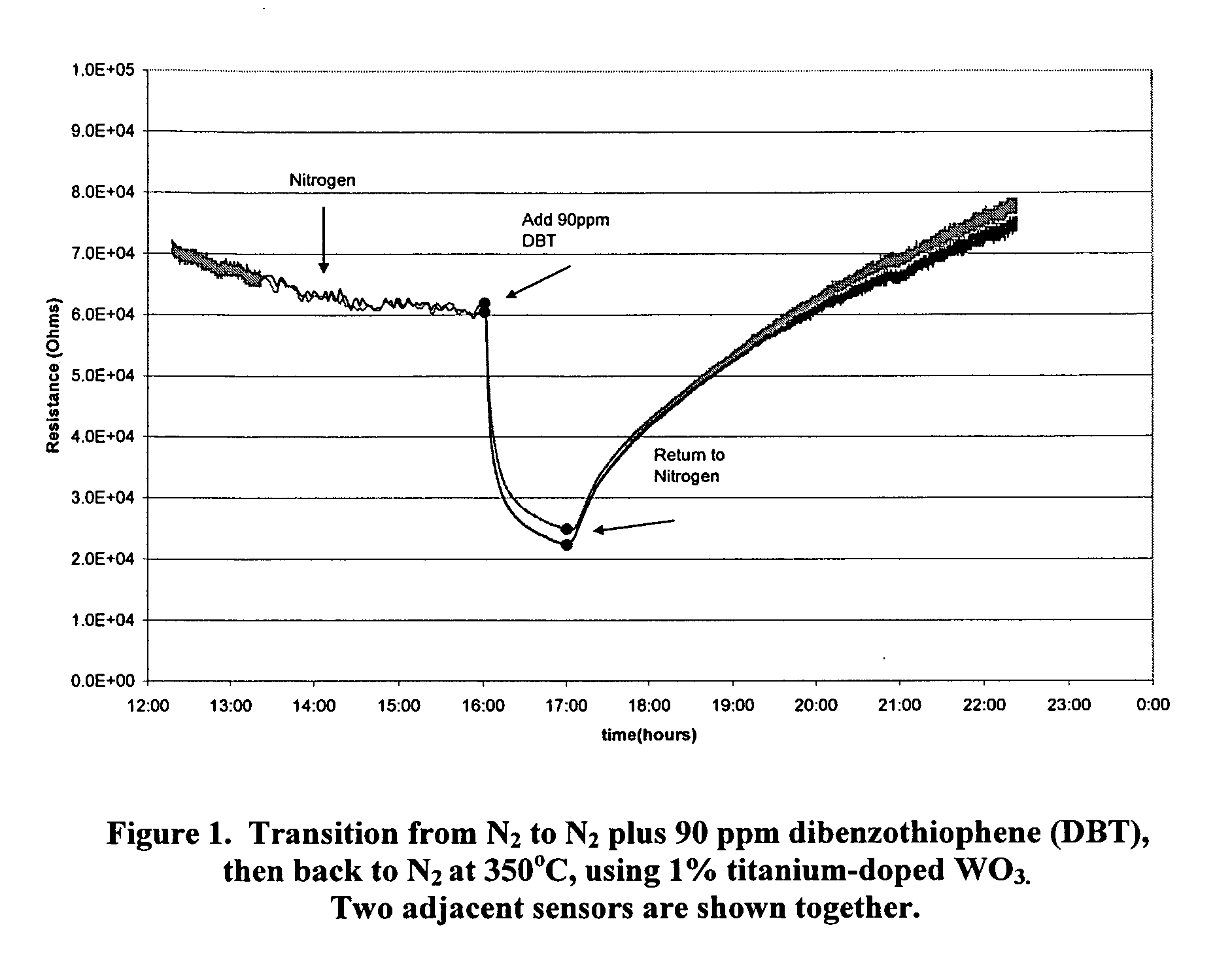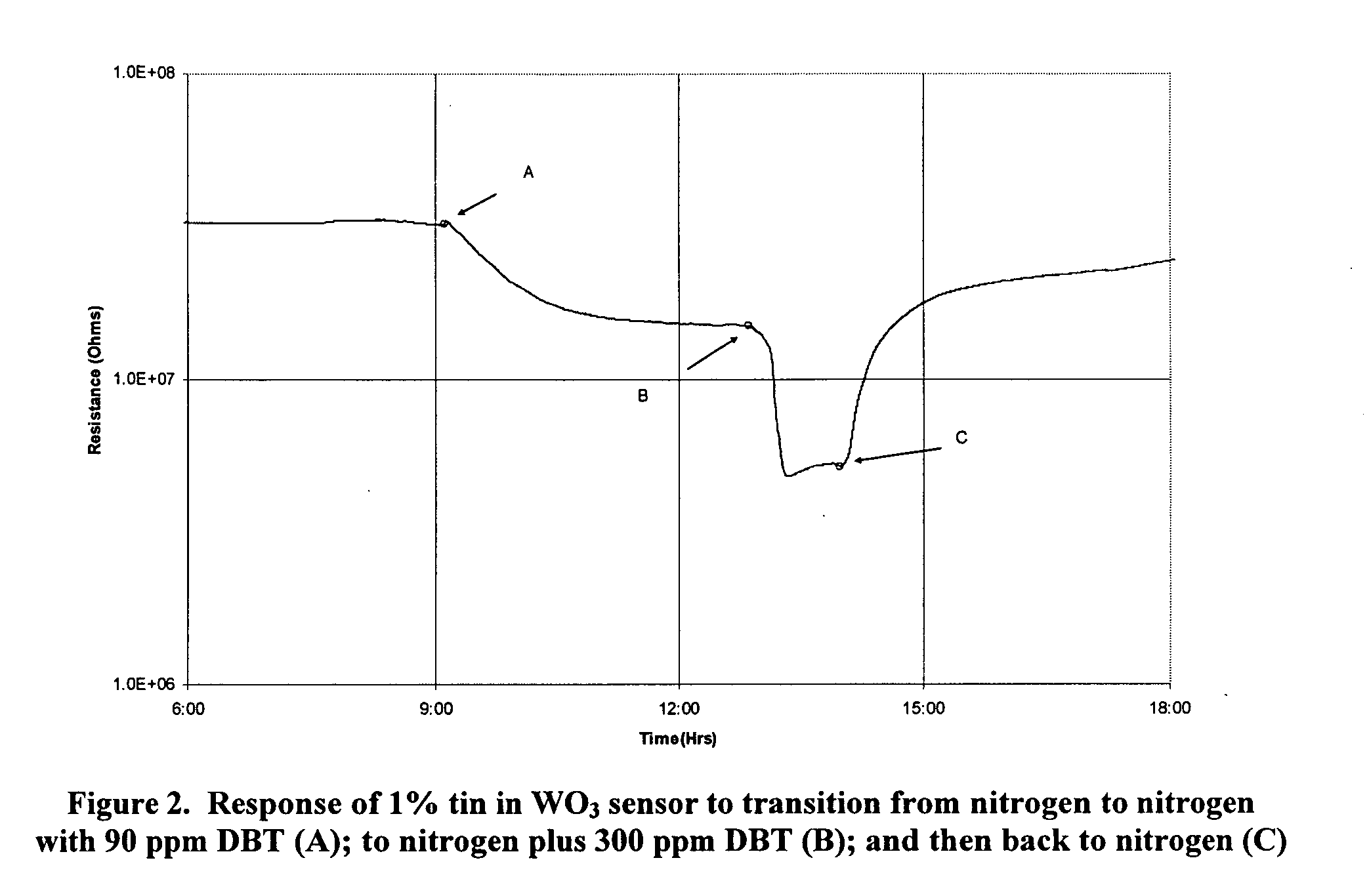Gas sensor
a gas sensor and gaseous technology, applied in the field of gas sensors, can solve the problems of insufficient oxygen for the type of gas sensor cannot be used to detect contaminants in gaseous mixtures, and the service life of many commercially available metal-oxide sensors is limited under rugged conditions and at elevated temperatures
- Summary
- Abstract
- Description
- Claims
- Application Information
AI Technical Summary
Benefits of technology
Problems solved by technology
Method used
Image
Examples
example 1
[0041]A nanopowder of 1% Ti-doped WO3 was prepared by plasma vapor deposition. The powder was pre-compressed into circular pellets each with a diameter of 5 mm and a thickness of 1 mm. Two of these pellets were placed into 1-mm-deep wells in a ceramic plate (MACOR® from Corning, Inc.). A sensor was constructed by placing a pair of electrodes at either end of the pellets using gold cermet (electronically conductive gold / ceramic composite) placed on the surface of the ceramic plate and contacting the pellet. Stainless steel fittings were used to bind high-temperature insulated wiring to the cermet electrodes for connection to an ohmmeter. The sensor plate was placed in a stainless steel housing equipped with sealed feedthroughs for sensing wires and thermocouples to measure the plate temperature. Also included were a pair of stainless steel tubes for inlet and outlet of vapor to be analyzed. This housing was placed in an oven. Following two hours of flushing with dry nitrogen gas, the...
example 2
[0042]A gas sensor was prepared as in Example 1 and exposed to DBT vapors with a nitrogen gas carrier at 90 ppm and 300 ppm levels. The sensor responded at 350° C., a temperature of interest for fuel desulfurization systems, with both the rate of resistance change and the absolute change in proportion to the DBT content as seen in FIG. 2.
example 3
[0043]A gas sensor was prepared as in Example 1 and exposed to nitrogen followed by (A) nitrogen with 200 ppm dibenzothiophene and then (C) back to nitrogen. In a separate measurement, the sensor was flushed with nitrogen followed by (B) nitrogen with 100 ppm dibenzothiophene and then (D) back to pure nitrogen. The two events are plotted together in FIG. 3 to show the relative changes in sensor resistance.
PUM
 Login to View More
Login to View More Abstract
Description
Claims
Application Information
 Login to View More
Login to View More - R&D
- Intellectual Property
- Life Sciences
- Materials
- Tech Scout
- Unparalleled Data Quality
- Higher Quality Content
- 60% Fewer Hallucinations
Browse by: Latest US Patents, China's latest patents, Technical Efficacy Thesaurus, Application Domain, Technology Topic, Popular Technical Reports.
© 2025 PatSnap. All rights reserved.Legal|Privacy policy|Modern Slavery Act Transparency Statement|Sitemap|About US| Contact US: help@patsnap.com



